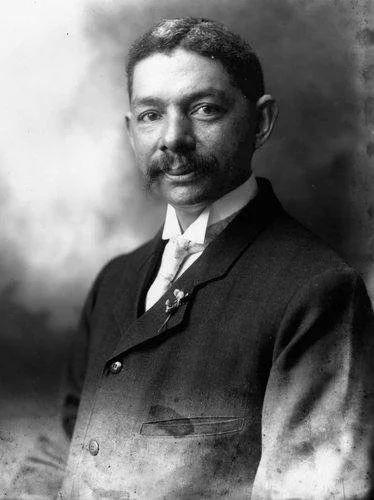8 Black individuals who helped shape the built environment
The built environment has been shaped and influenced by a variety of minds throughout history, continuously evolving with our ever-changing culture. Some individuals have been recognized for their work and influence in the industry, while others contributed without public recognition for far too long. In honor of Black History Month, we want to share some of the Black individuals who helped shape the built environment through their talent, creativity, and determination to perceiver in an industry that has not always been accepting of them.
Robert Robinson Taylor (1868–1942)
Robert Robinson Taylor is the nation's first academically trained black architect. Not only is Taylor the first accredited African-American Architect, he is also the first African-American graduate from Massachusetts Institute of Technology (MIT), where he graduated in 1892. Upon graduation, Booker T. Washington recruited him to help establish Tuskegee Institute in Alabama, which is now forever associated with his work and legacy. In 2015, he was featured on a stamp issued by the U.S. Postal Service.
Moses McKissack III (1879–1952)
Moses McKissack III was an African-American architect who joined his brother Calvin to create one of the earliest black architectural firms in the United States: McKissack & McKissack, located in Nashville, Tennessee. The firm is still in practice today and has worked on thousands of projects including the National Museum of African American History and Culture and the MLK Memorial in Washington, D.C.
Julian Abele (1881–1950)
Although Julian Abele was one of America’s most important architects, he never signed his work and was not publicly acknowledged in his lifetime. Abele spent his entire career at the Philadelphia firm of the Gilded Age Architect Horace Trumbauer, working on the expansion of Duke University. It wasn’t until the 1980’s when he was recognized for his work at Duke, which has been described as a work of art.
Vertner Woodson Tandy (1885–1949)
Vertner Woodson Tandy was the first registered Black architect in New York State, as well as the first Black man to pass the military commissioning examination. Tandy is also well known for being one of the founders of Alpha Phi Alpha Fraternity, during his time at Cornell University. In addition to those accomplishments, Vertner Woodso Tandy also designed landmark homes for some of the wealthiest residents of Harlem, including Madam C. J. Walker.
Paul Revere Williams (1894-1980)
Dubbed as the “architect of the stars”, Paul Revere Williams had an extensive clientele of old Hollywood’s most well-known celebrities. Because of his esteemed reputation, Williams became the first African-American member of the American Institute of Architects (AIA) in 1923. Paul Revere Williams is renowned for designing over 2,000 homes throughout the hills of Los Angeles.
Amaza Lee Meredith (1895-1984)
Although having no formal credentials or training in the field, Amaza Lee Meredith is considered one of the most daring architects and artists of her time. Meredith attended Virginia State University, where she founded the fine arts department. She went on to design her own home which is now included in the National Register of Historic Places. Another influential design by Meredith is Azurest North, a recreational spot for affluent African-American families in Long Island.
Norma Merrick Sklarek (1926-2012)
Norma Merrick Sklarek is known for being the first African-American woman to become a licensed architect in both California and New York, as well as the first Balck woman to become a member of the American Institute of Architecture (AIA). Sklarek also worked on many large projects such as the U.S Embassy in Tokyo, the Mall of America, and Terminal 1 at the Los Angeles International Airport.
David Adjaye (1966-current)
David Adjaye is the only living architect on our list and is known for designing many notable buildings across the globe. Adjay is an award winning Ghanian-British architect who spent a lot of his time traveling to various countries, where he developed a global perspective and gained inspiration for his designs. Some of his most well-known works include the Latvian Museum of Contemporary Art, and the Smithsonian National Museum of African American History and Culture in Washington, D.C.
































